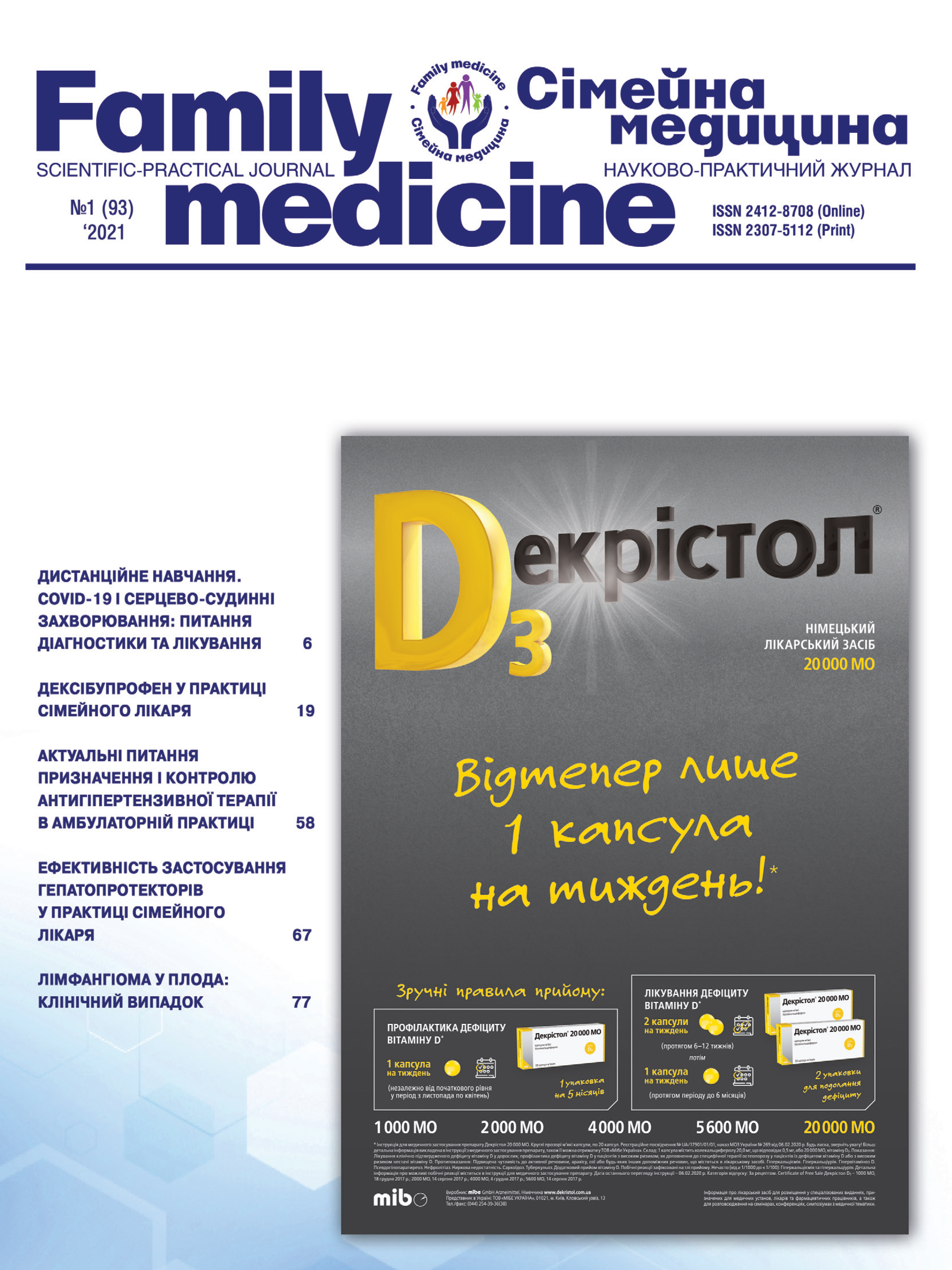Polypharmacy in the Treatment of Arterial Hypertension and Heart Failure
##plugins.themes.bootstrap3.article.main##
Abstract
Due to the development of the pharmaceutical industry, today there are a large number of drugs with similar properties and efficacy, but little-studied pharmacodynamics and pharmacokinetics. There fore many medicines are prescribed more often and in larger quantities than necessary. That is why patients and doctors often face the problem of polypharmacy in various fields of medicine including cardiology.
The paper presents the results of the analysis of 249 case histories of inpatients with cardiac profile. All patients with underlying cardiac pathology (arterial hypertension, ischemic heart disease) had concomitant diseases. Patients with arterial hypertension had other concomitant diseases, most often gout, diseases of the digestive system, anemia. Chronic heart failure was found in the majority of patients with arterial hypertension, ischemic heart disease, chronic rheumatic heart disease.
We have determined which pharmacological groups of drugs are prescribed to patients with arterial hypertension or chronic heart failure and concomitant diseases: more than 60 % of patients are prescribed drugs that are unsuitable for their condition. We analyzed and compared treatment standards in Ukraine and the world and carried out that doctors in Ukraine use modern and effective methods of treatment. The risks of prescribing a large number of drugs to patients are analyzed and the risks of dangerous drug interactions that can threaten the life or health of the patient are identified. In particular, in the treatment of cardiac patients, doctors used combinations of calcium antagonists and beta-blockers, NSAIDs and antithrombotic drugs, corticosteroids and antibacterial drugs of the fluoroquinolone group, ACE inhibitors and potassium-preserving diuretics, antiarrhythmic drugs and highly active diuretics, etc.
We compared medicinal prescriptions for the treatment of cardiovascular diseases with an interval of 10 years and revealed that in 2008 the therapy often did not comply with the international and Ukrainian treatment protocols, however, in 2018, unwanted drug interactions were found 4 times less often. That reflects the trend of doctors’ awareness of pharmacology and evidence-based medicine.
##plugins.themes.bootstrap3.article.details##

This work is licensed under a Creative Commons Attribution 4.0 International License.
Authors retain the copyright and grant the journal the first publication of original scientific articles under the Creative Commons Attribution 4.0 International License, which allows others to distribute work with acknowledgment of authorship and first publication in this journal.
References
Colleen A. Colley PharmD & Linda M. Lucas MD, Polypharmacy, The cure becomes the disease.
Sharon B. Wigal, Efficacy and Safety Limitations of Attention-Deficit Hyperactivity Disorder Pharmacotherapy in Children and Adults.
World Health Organization. Global atlas on cardiovascular disease prevention andcontrol. http://www.who.int/cardio-vascular_diseases/publications/atlas_cvd/en/. Accessed August 12, 2014.
Erlih Aleksej Dmitrievich, Gracianskij Nikolaj Andreevich, Izuchenie dokazatel’noj bazy ispol’zovaniya preparatov, soderzhashchih etilmetilgidroksipiridina sukcinat, u pacientov s insul’tom i ego posledstviyami – Tekst nauchnoj stat’i po special’nosti «Klinicheskaya medicina».
Order of the Ministry of Health of Ukraine dated May 24, 2012 № 384.
Order of the Ministry of Health of Ukraine dated July 3, 2006 №436.
Kostin A.V., Kostina S.A., 2013 Informacionno-cifrovye tekhnologii v profilaktike arterial’noj gipertenzii. Arterial’naya gipertenziya, 1(19):76–83.
Eugene Braunwald and Michael R. Bristow, Congestive Heart Failure: Fifty Years of Progress, 2018.
Yancy CW, Jessup M, Bozkurt B, et al. 2013 ACCF/AHA CHF Guideline for the Management of Heart Failure: A Report of the American College of Cardiology Foundation/American Heart Association Task Force on Practice Guidelines. Circulation. 2013.
Martin R. Cowie 2015. https://www.slideshare.net/drucsamal/can-weafford-heart-failure-management-inthe-future-58319630
R Cruz-Coke, Etiology of essential hypertension, 1981 https://doi.org/10.1161/01.HYP.3.6_Pt_2.II-191
Kompendium lekarstvennyh preparatov https://compendium.com.ua/uk/clinical-guidelines-uk/cardiology-uk/section-15-uk/glava-1-klasifikatsiyazahvoryuvan-sertsevo-sudinnoyisistemi/3-klasifikatsiya-ag/
Centers for Disease Control and Prevention (CDC). Vital signs: awareness and treatment of uncontrolled hypertension among adults – United States, 2003-2010. MMWR Morb Mortal Wkly Rep. 2012; 61:703–709.
Matthew R Alexander, MD, PhD Fellow, Division of Cardiovascular Medicine, Department of Internal Medicine, Physician Scientist Training Program, Vanderbilt University School of Medicine, https://emedicine.medscape.com/article/241381-treatment#d10
Ioana Dumitru, MD Associate Professor of Medicine, Division of Cardiology, Founder and Medical Director, Heart Failure and Cardiac Transplant Program, University of Nebraska Medical Center; https://emedicine.medscape.com/article/163062-treatment#d11





